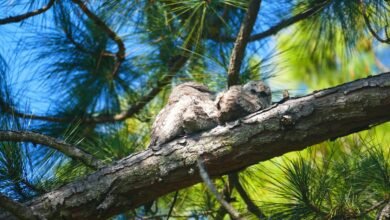The beauty of stingers

Electric blue Glaucus atlanticus, blue sea slug, pelagic nudibranch, shell-less gastropod mollusk. Otherwise known as sea swallow, blue angel, blue glaucus, blue dragon. They spend their life floating on the currents upside down, partially buoyed by a gas bubble in their stomachs. This blue side faces upward to camouflage it against the blue of the sea, while the silver side faces downward to camouflage it against the surface from fish.
They store stinging nematocysts robbed from the jellyfish it feeds on, like Portuguese man o’ wars. These cells are concentrated, so pack an even more powerful sting. You can get a sense of its scale from the bee top right. And, as it happens, an article on these creatures has just been uploaded to Australian Geographic.

Blue Bottles are common in Australian beaches. When I was a child I worried about its larger, more venomous Atlantic cousin, Physalia physalis (or Portuguese Man o’ War) from a children’s book I inherited from my father (along with whirlpools and quicksand).
They are a colony made up of specialised polyps forming the float, tentacles, digestive system and gonozooids (for reproduction). See Nat Geog

These were taken at Valla Beach, Nov 19.



